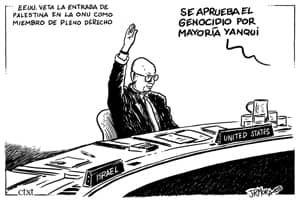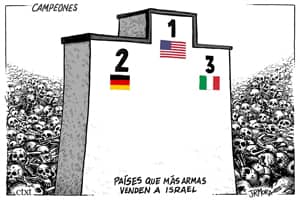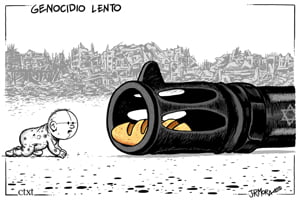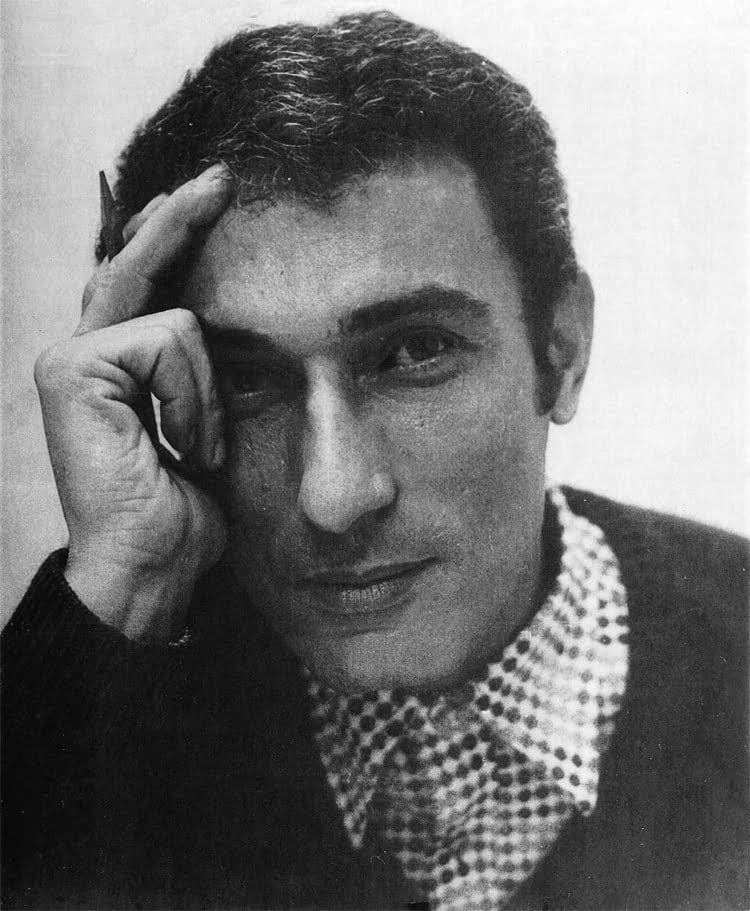
*Naji al-Ali. Photo by Saleh Abbas (1969). Source: book "Filastin. L'arte di resistenza del vignettista palestinese Naji al-Ali". April 2013. Eris. Advance of 32 pages. (Download PDF 2,59Mb) British police reopen murder case of Palestinian cartoonist Naji al-Ali
On the 30th anniversary of the murder in London of Palestinian cartoonist Naji Salim Hussain Al-Ali, creator of the popular character "Handala", investigators from the Metropolitan Police's Counter Terrorism Command (CTC) have reopened the case.
At around 17:10 on Wednesday 22 July 1987, Naji al-Ali, a political cartoonist for the Kuwaiti daily Al-Qabas, was shot in the back of the head as he walked to his office in Ives Street, Knightsbridge.
Al-Ali, 51, was taken to hospital, where he remained in a coma for 37 days until he died on 29 August 1987. The cartoonist had received several death threats in the years leading up to his murder.
Looking for new information
Timeline of events. Source London's Metropolitan Police
Ismail Sowan, a 28-year-old Palestinian student born in Jerusalem, was arrested during the investigation and was later convicted and imprisoned for possession of weapons and explosives. Sowan claimed to have been working for the PLO and the Israeli secret service, Mossad.
A second suspect, also arrested and later deported, claimed to be a double agent. It was later revealed that the Mossad had two double agents working in London. The Mossad refused to share information relating to this affair with their British M16 counterparts, resulting in the expulsion of Israeli diplomats, one of whom was the embassy attaché and identified as the person who directed the two agents.
Margaret Thatcher, then prime minister, closed the Mossad operations centre at Green Palace, Kensington, 24 hours after Sowan was convicted of possessing arms and explosives at the Old Bailey in 1988.
CTC (or SO15) Commander Dean Haydon said:
"Mr. Al-Ali's brutal murder devastated his family and 30 years later they are still grieving the loss."
"We have reviewed this case and followed a number of lines of enquiry which have not led us to identify these two men. However, in 30 years much can change loyalties and people who were unwilling to speak out at the time of the murder may now come forward with crucial information.
"We are keeping an open mind about the motive for Mr Al-Ali's assassination and believe there are some people who have information that could help us bring those responsible for his murder to justice." (Video)
The killer
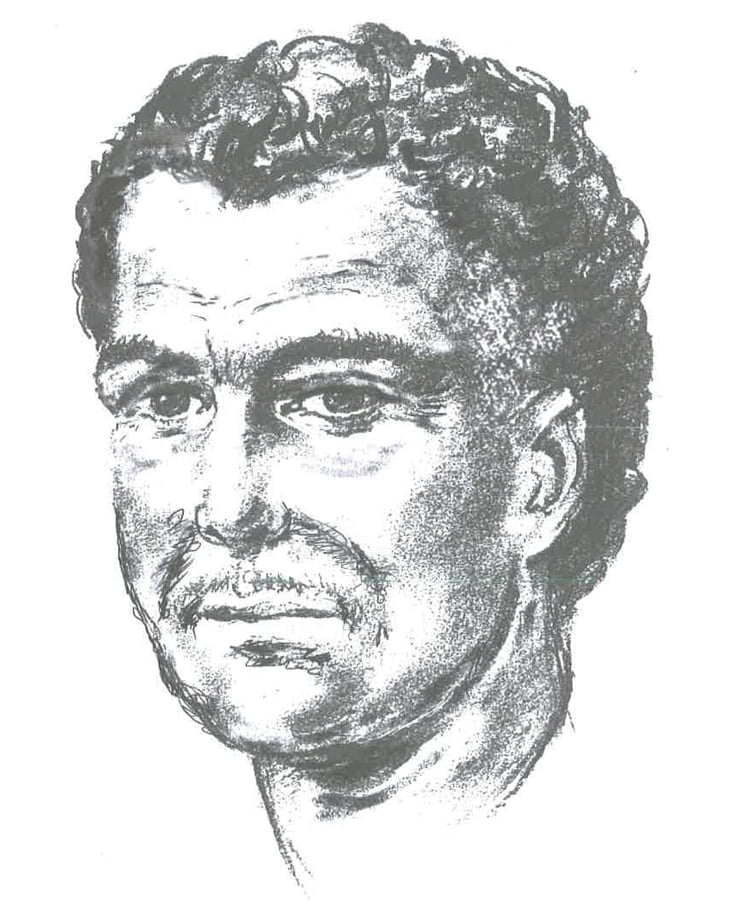
Sketch of Naji Al-Ali's killer. Source: London's Metropolitan Police
According to Hayden:
"The gunman was seen following Al-Ali for about 40 seconds before shooting him. Despite the brevity of the attack, witnesses were able to give investigators a good description of the suspect.
"We believe that person may have arranged to meet another man seen driving a silver grey Mercedes after the murder. We believe this driver was seen hiding the gun in his coat, intending to use it."

Photograph of the Tokarev 7.62 which investigators believe to be the gun used to kill Naji al-Ali. It was found on 22 April 1989 on a farm on the Hallfield Estate, Paddington, almost two years after the murder.
The Metropolitan Police has set up several channels of contact with the investigation team for anyone who can provide information about the case.
-Telephone 020 3276 9014
-Calls from outside the UK: 0044 9014 203 276
-Anonymous calls: 0800 555 111
-You can also contact us by email: amazon@met.pnn.police.uk
-In all cases, please note that this is information about "Operation Amazon".
About the author

Naji al-Ali was born in 1936 in the Palestinian village of Ash Shajara (Galilee).
In 1948, Ash Shajara was one of 480 villages destroyed in what is known as the 'Nakba', or catastrophe. The Nakba is the devastation of Palestine at the creation of the Israeli state. Palestinians lost more than half of their land, massacres took place, creating some 750,000 refugees. Naji al-Ali was 10 years old when he and his family were expelled from Palestine to the Ein Al-Hilweh refugee camp in Lebanon. In the early 1960s he emigrated to Kuwait.
In 1974 the civil war began in Lebanon and Naji al-Ali returned to join the Palestinian Fedayeen, entrenched in Beirut. When the PLO negotiated with Israel for the withdrawal of its army, the Lebanese Phalanges began the persecution of Palestinian refugees, culminating in the massacre of Sabra and Chatila, two camps outside Beirut. Naji al-Ali hid for six months in the tunnels of the city until he was finally able to escape to Kuwait.
From there he denounced the PLO leadership, claiming indirect responsibility for the Sabra and Chatila massacres. In response, the PLO leadership and several Arab newspapers organised a major press campaign against Nayi al-Ali, which took the form of public acts of repudiation. Eventually, he was expelled from Kuwait. No other Arab state was willing to accept him and he went into exile in London. (1)
From 1975 until his death in 1987, Naji al-Ali drew numerous cartoons denouncing the situation of Palestinian refugees.

Handala
His character, Handala, always with his back to the viewer (played as a nod to those who turn their backs on Palestinian demands), symbolises the 10-year-old refugee boy he was and who became an icon for Palestinian refugees. To this day, he remains a powerful symbol of the Palestinian people's struggle and resistance for justice and self-determination.
At the time of his assassination, it was claimed in the Middle East that he was killed as part of a campaign by the Palestine Liberation Organisation (PLO) to silence his critics in Europe and the Middle East, which the PLO denied.
His son Khalid al-Ali said:
"It is clear that many people were not happy with his cartoons throughout his career, from, obviously Israel to Arab leaders and governments, including Palestinian leaders.
"There were always threats, there were always problems with his drawings, but this didn't stop him from continuing to draw."
Al-Ali's family remains convinced that the assassination may have been ordered by Yasser Arafat.
Related: Revisiting the great Palestinian cartoonist Naji al-Ali 30 years after his assassination by Jonathan Guyer.
Sources consulted:
![]() Metropolitanan Police Appeal following the murder of cartoonist in 1987
Metropolitanan Police Appeal following the murder of cartoonist in 1987
Related:



